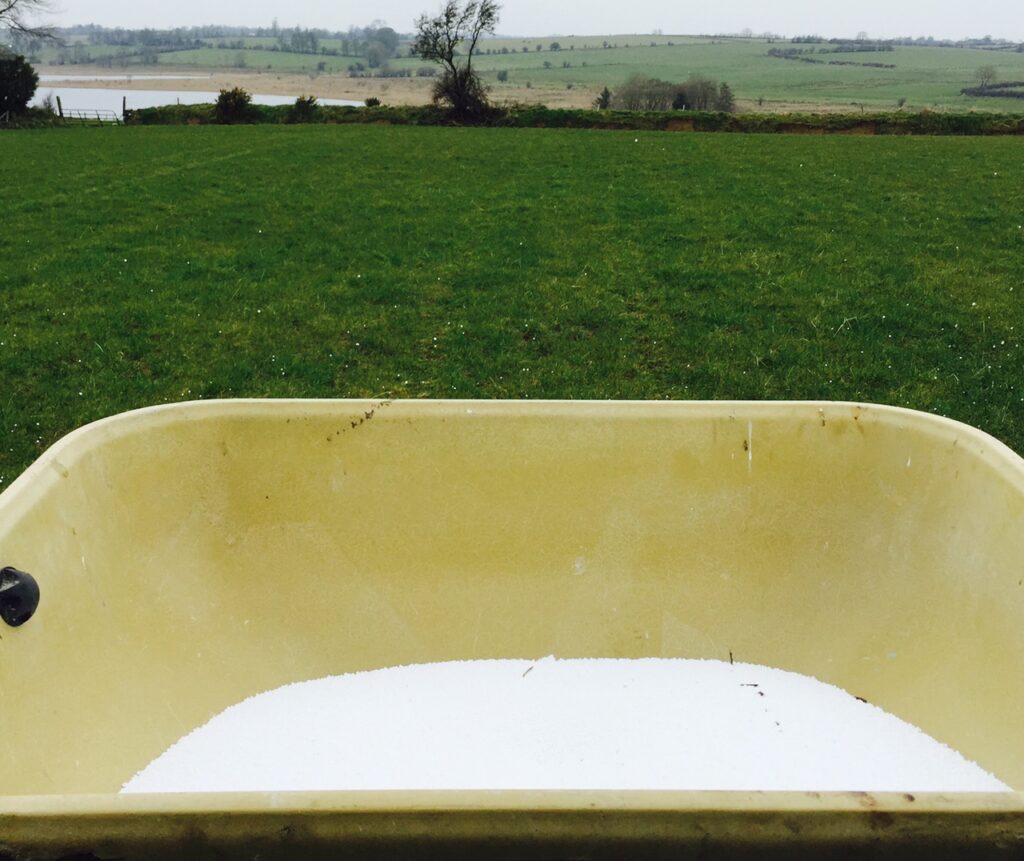It’s mid-April and the sun is shining. Temperatures are varying quite a bit throughout the country but farms that got the target area grazed in February are reaping the rewards.
Strong covers are now back on these paddocks and the second rotation is underway. Farmers need to be aware of target grazing covers.
The target cover/cow to begin the second rotation is 140-150kg of Dry Matter (DM) and the target Average Farm Cover (AFC) sits between 400-500kg of grass DM/ha.
The latter is the figure I prefer using at the beginning of the second rotation, as it ensures there is enough grass cover across the farm to sustain good growth rates.
Remember: ‘Grass grows grass’
Focusing on the cover/cow on lowly-stocked farms can result in the AFC dropping too low and, as a result, reduce growth rates. So, it’s important to keep the AFC close to 500kg DM/ha as a guide.
When you do your weekly walk, look at the 10-day forecast and estimate what growth rate you are likely to get on your farm.
If growth rates are behind target and grass cover is low, supplement hard and fast now.
Fertiliser: What should I use?
The biggest range in growth rates between farms can be attributed to temperature and fertiliser used. We can’t alter temperature but we can manipulate plant nutrient availability.
If grass cover is behind target, urea is not going to cause a huge jump in growth rates; you could park urea until the next rotation and go in with a compound.
The compound needed will depend on your soil analysis results.
It may be beneficial to blanket spread the grazing block again if it has been more than three weeks since your last fertiliser application.
Slurry: What dictates nutrient content?
At a recent discussion group meeting, the topic of correcting soil infertility was discussed.
I was fairly surprised that no one questioned the nitrogen (N), phosphorous (P) and potassium (K) content of slurry, but were happy enough to go with the ‘textbook guidelines’ they received along with their soil sample reports.
The variation between the content of different slurry tanks, never mind between farms, is absolutely huge. We have good levels of P in our soil but it is low in K. The grass we grow will therefore be low in K, as will the silage – and therefore so will the slurry.
Applying low K slurry on low K ground will not improve our K index. However, if we follow ‘typical’ slurry K content guidelines, slurry and straight nitrogen is sufficient for silage ground!
On low K ground, to grow a well-balanced crop of silage, apply 70-90 units of N/ac, 30-35 units of P/acre and 70-80 units of K/ac (this includes chemical fertiliser and slurry).
The role of potassium
Potassium is a major nutrient for the plant; it regulates water intake, increases root mass and increases grass growth.
If we under apply this nutrient, we will have under-performing swards. Therefore, it is important to take a slurry sample for analysis – take a sample of your mixed slurry and send it off. It is important to try and take the sample from your main tank.
If soil K levels are low and you haven’t got any slurry out this spring on these swards, apply some compound K now. 15-20 units will have a good impact.
Potassium can inhibit magnesium uptake by the plant; it shouldn’t be an issue on low K paddocks. But we also need to be mindful of grass tetany. Cows need to be supplemented with 40g of magnesium per day.
Focusing on breeding
It’s not long until the breeding season starts for most of us and having cows on an increasing plane of nutrition will increase energy intake, body condition, protein percentage and milk solids output.
Late-calving cows can be vet-checked from 2.5 weeks post-calving to identify dirty or non-cycling cows.
Any cows or heifers that need assistance calving, had milk fever or any issues during or after calving should be vet-checked also. It doesn’t take many identified dirty cows to pay for the vet call-out and treatments.
The recent ICBF update has caused some changes to bull proofs; ensure calving difficulty is below 2.0 for bulls being used on heifers and old cows.



